How to swiftly bridge the urban-rural digital gap with 'Solution BIRD
Global Plan Inc., Japan
Session 282
ITU-Standardized Affordable, Reliable, DIY-Installable All-Terrain Optical Cable
"At WSIS 2022, Dr. Okamura moderated Session 222, facilitating discussions on how fiber optics, LEO satellite technology, and fixed wireless solutions can effectively bridge the urban-rural digital divide on a national scale by leveraging each other's strengths. The outcomes of Session 222 are detailed on pages 97-99 of the WSIS 2022 Outcome Document.
The outcome document of Session 222 in 2022 provided suggestions for thematic aspects to be incorporated into the next WSIS Forum, proposing:
"One thematic aspect could explore the synergistic deployment of low-cost, reliable, and sustainable broadband solutions to promptly connect populations in challenging natural and societal environments, including regions with diverse terrain."
This session aims to deliberate on how, with the assistance of the ITU, we can expedite the widespread adoption of Solution BIRD to connect 2.6 B underserved populations affordably, comprehensively, and expeditiously, ensuring that no remote community is left behind in the digital divide. The CAPEX of BIRD Cable laying, for example, is less than $10,000 US per kilometer (Cable Cost: FOB Japan; Labor Cost: Variable).
The potential repercussions of neglecting unconnected communities amidst the rapid evolution of digital technologies such as AI and DX are profound, encompassing substantial damage, loss, and societal disruption. It is imperative that we prioritize inclusive connectivity to mitigate these risks and foster equitable digital advancement."
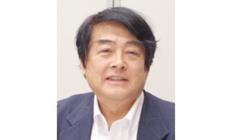
Dr. Haruo Okamura served as the vice-chairman of ITU-T SG15 and ITU-T TSAG, and currently chairs the IEC SC86C (Fibre Optic Systems and Active Devices). He is renowned for developing an unprecedentedly affordable and lightweight Submarine-Cable-Based Robust Optical Cable Solution, which has garnered recognition as a WSIS 2022 prize champion. This innovative solution aligns with the ITU-T standards he has contributed to, including L.1700 (Affordability-First Concept, 2016), ITU-T L.110 (Optical Cable for Direct Surface Application, 2017), and ITU-T L.163 (Low-Cost DIY Installation of L.110 Cable, 2018).
Dr. Okamura's Optical Cable Solution is highly versatile, capable of being installed on various surfaces, including the ground, underground, aerial, and underwater environments. Its feasibility has been confirmed in challenging terrains such as the Himalayas and suburbs of Mongolia, where the capital expenditure (CAPEX) for implementing this connectivity was reduced to approximately 1/10 of that required for conventional cables.
At the WSIS 2022, Dr. Okamura moderated Session 222, guiding discussions on how Fiber, LEO Satellite, and Fixed Wireless technologies can effectively address the urban-rural digital gap on a national scale, leveraging each other's strengths. The outcome of Session 222 can be found on pages 97-99 of the WSIS 2022 Outcome Document.
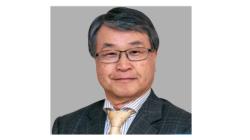
Seizo Onoe took office as Director of the Telecommunication Standardization Bureau (TSB) at the International Telecommunication Union (ITU) on 1 January 2023.
Before his election as TSB Director by ITU Member States, he completed an over 30-year career with Japanese mobile operator NTT DOCOMO. In 2021, he became Executive Vice President and Chief Standardization Strategy Officer for the Nippon Telegraph and Telephone (NTT) Corporation and a Fellow of NTT DOCOMO, INC. From 2017, he served as NTT DOCOMO’s Chief Technology Architect and President of its subsidiary DOCOMO Technology.
Between 2012 and 2017, he served as NTT DOCOMO’s Chief Technology Officer and Executive Vice President, a Member of the Board of Directors, and Managing Director of R&D Innovation Division. Earlier, he served as Senior Vice President and Managing Director of NTT DOCOMO’s R&D Strategy Department and Managing Director of the company’s Radio Network Development Department.
As TSB Director, he heads the part of ITU responsible for the coordination of technical standards and collaborative standardization processes that enable the interconnection and interoperability of information and communication technologies (ICTs) worldwide.
Mr Onoe is committed to facilitating open and inclusive standardization processes, along with promoting digital technologies to address global issues, building a new ecosystem that reflects evolving technologies, and strengthening cooperation and collaboration in ICT standardization worldwide.
Known in the industry as “the father of LTE” (Long-Term Evolution), he helped upgrade the wireless broadband standard for mobile devices and networks. He now aims for global outreach to bridge standardization gaps, deliver the benefits of technology widely and speedily, and ensure meaningful and affordable broadband access for everyone.
Mr Onoe holds a Master’s degree in electronics from the Kyoto University Graduate School of Engineering.
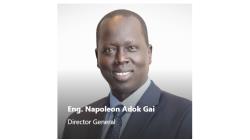
Napoleon Adok Gai is a South Sudanese Engineer and Director of South Sudan's National Communication Authority (NCA) as of 2024. He was appointed to the position by President Salva Kiir in August 2020.
In October 2022 Napoleon pledged to connect South Sudan a fiber optic that will provide the country with access to reliable internet service for at least 4 years.
Like most South Sudanese born during the civil war, Gai was forced to become a child soldier with the Sudan People's Liberation Army (SPLA) at the age of 12. However, in the early 2000s, Gai was able to seek education in the UK after the United Nations signed the Optional Protocol to the Convention on the Rights of the Child on the Involvement of Children in Armed Conflict (OPAC). In 2002, Gai presented a letter with writings and drawings of child soldiers affected by wars across the world to Mary Robinson, the UN High Commissioner for Human Rights at the time.
Gai is a researcher and founder of Gurtong Trust, an independent non-profit community-based project working at eradicating all ethnic, and political difference among South Sudanese.
He has also helped develop digital infrastructure in South Sudan since his appointment into office. In October 2022, Napoleon announced plans establish of fiber optics in South Sudan by 2026. https://www.youtube.com/watch?v=fmwFKMUA7W0
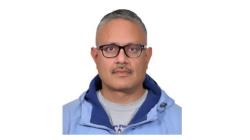
Abhimanyu has architected enterprise grade technology solutions for Connecting All and Disaster Management for covering Broadband Technologies, Distributed Architectures, PPP Models, Compliance, Regulatory Requirements, and much more.
Currently, as a team member of ICT4D, Abhimanyu’s focus is on last mile service delivery based on evidence driven research and contextually relevant outreach optical cable solutions. ICT4D’s projects are inspired by PPP models to ensure sustainability through affordable high quality service delivery.
The PPP development philosophy, which is based on the Local Community as both owners and users, has led the ICT4D team to spearhead two major ITU-T L.110 optical cable Rural Broadband projects in Nepal, based on BIRD* Solution.
In Dullu Municipality, West Nepal Himalayas, ICT4D has partnered with a commercial ISP, which has taken the responsibility of both service delivery and coverage expansion with Solution BIRD. The unique partnership of Municipality (Public), ISP (Private), and ICT4D (Partner Facilitation) has been a singular success for Dullu residents.
In the Everest Base Camp Project, ICT4D has completed the Route Survey and is preparing for network deployment. This ITU-T L.110 Optical Cable will extend from Namche Bazaar to Everest Base Camp along the Trekking Route, 42km, where no heavy machinery is used but manual on-surface, mostly, cable laying is excuted thanks the rugged lightweight ITU-T L.110 cable. ICT4D strives to fulfill the role of a Digital Transformation as Nepal continues to embark on a technology enabled path to meet its multifaceted development challenges. There is an urgent need to empower both citizen and governance artifacts, which should be aligned with Nepal's recent transition to federalism. This is more important than ever with the realignment of political arrangements with local governments now constitutionally mandated to play ever more central roles in service delivery and development.
Abhimanyu Pandey holds a Master’s in Electrical and Computer Engineering from University of Massachusetts, Amherst.
-
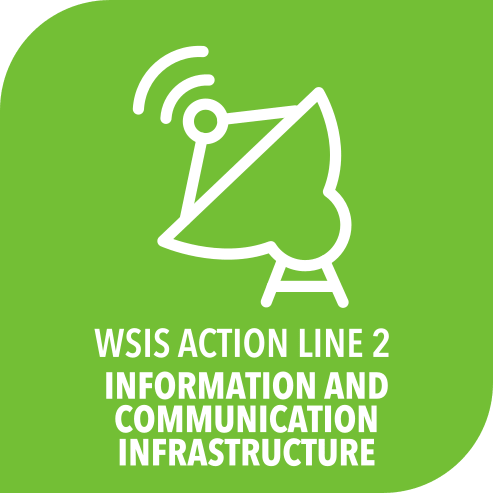 C2. Information and communication infrastructure
C2. Information and communication infrastructure
-
 C7. ICT applications: benefits in all aspects of life — E-business
C7. ICT applications: benefits in all aspects of life — E-business
-
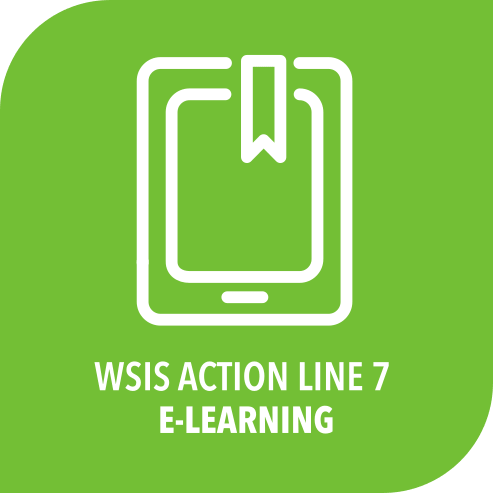 C7. ICT applications: benefits in all aspects of life — E-learning
C7. ICT applications: benefits in all aspects of life — E-learning
-
 C7. ICT applications: benefits in all aspects of life — E-health
C7. ICT applications: benefits in all aspects of life — E-health
-
 Goal 3: Ensure healthy lives and promote well-being for all
Goal 3: Ensure healthy lives and promote well-being for all
-
 Goal 4: Ensure inclusive and equitable quality education and promote lifelong learning opportunities for all
Goal 4: Ensure inclusive and equitable quality education and promote lifelong learning opportunities for all
-
 Goal 8: Promote inclusive and sustainable economic growth, employment and decent work for all
Goal 8: Promote inclusive and sustainable economic growth, employment and decent work for all
-
 Goal 9: Build resilient infrastructure, promote sustainable industrialization and foster innovation
Goal 9: Build resilient infrastructure, promote sustainable industrialization and foster innovation
-
 Goal 10: Reduce inequality within and among countries
Goal 10: Reduce inequality within and among countries
-
 Goal 11: Make cities inclusive, safe, resilient and sustainable
Goal 11: Make cities inclusive, safe, resilient and sustainable
-
 Goal 13: Take urgent action to combat climate change and its impacts
Goal 13: Take urgent action to combat climate change and its impacts
-
 Goal 15: Sustainably manage forests, combat desertification, halt and reverse land degradation, halt biodiversity loss
Goal 15: Sustainably manage forests, combat desertification, halt and reverse land degradation, halt biodiversity loss
-
 Goal 16: Promote just, peaceful and inclusive societies
Goal 16: Promote just, peaceful and inclusive societies
-
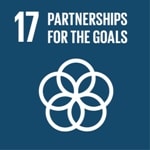 Goal 17: Revitalize the global partnership for sustainable development
Goal 17: Revitalize the global partnership for sustainable development